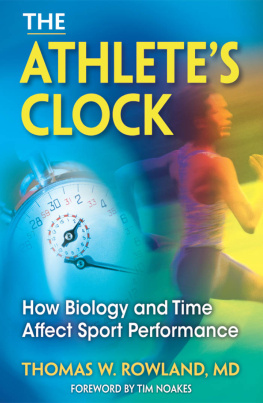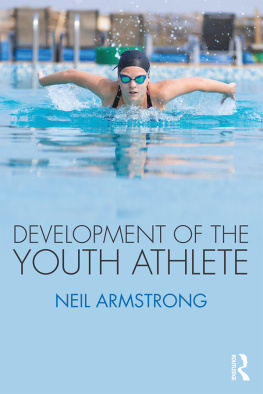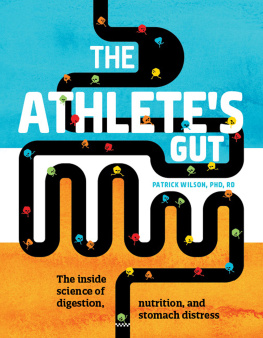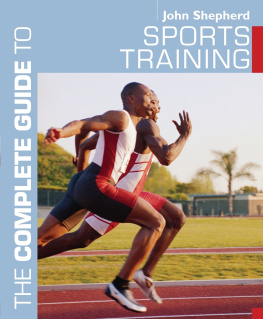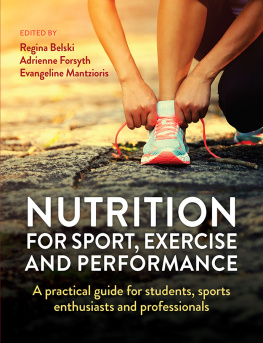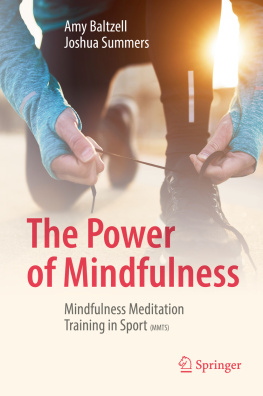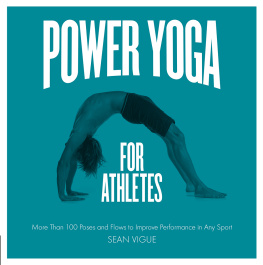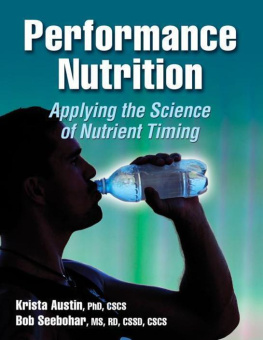
Library of Congress Cataloging-in-Publication Data
Rowland, Thomas W.
The athletes clock : how biology and time affect sport performance / Thomas W. Rowland.
p. ; cm.
Includes bibliographical references and index.
ISBN-13: 978-0-7360-8274-7 (print)
ISBN-10: 0-7360-8274-3 (print)
1. Sports--Physiological aspects. 2. Chronobiology. I. Title.
[DNLM: 1. Athletic Performance--physiology. 2. Chronobiology Phenomena--physiology. 3. Sports--physiology. QT 260]
RC1235.R685 2011
612'.044--dc22
2010049774
ISBN-10: 0-7360-8274-3 (print)
ISBN-13: 978-0-7360-8274-7 (print)
Copyright 2011 by Thomas W. Rowland
All rights reserved. Except for use in a review, the reproduction or utilization of this work in any form or by any electronic, mechanical, or other means, now known or hereafter invented, including xerography, photocopying, and recording, and in any information storage and retrieval system, is forbidden without the written permission of the publisher.
The web addresses cited in this text were current as of November 2010, unless otherwise noted.
Acquisitions Editor: Myles Schrag; Developmental Editor: Kevin Matz; Assistant Editors: Steven Calderwood and Antoinette Pomata; Copyeditor: Joy Wotherspoon; Indexer: Betty Frizzll; Permissions Manager: Dalene Reeder; Graphic Designer: Bob Reuther; Graphic Artist: Kathleen Boudreau-Fuoss; Cover Designer: Bob Reuther; Photographer (cover): Human Kinetics; Photo Asset Manager: Laura Fitch; Photo Production Manager: Jason Allen; Art Manager: Kelly Hendren; Associate Art Manager: Alan L. Wilborn; Illustrations: Human Kinetics; Printer: McNaughton and Gunn
Human Kinetics books are available at special discounts for bulk purchase. Special editions or book excerpts can also be created to specification. For details, contact the Special Sales Manager at Human Kinetics.
Printed in the United States of America 10 9 8 7 6 5 4 3 2 1
The paper in this book is certified under a sustainable forestry program.
Human Kinetics
Website: www.HumanKinetics.com
United States: Human Kinetics
P.O. Box 5076
Champaign, IL 61825-5076
800-747-4457
e-mail:
Canada: Human Kinetics
475 Devonshire Road Unit 100
Windsor, ON N8Y 2L5
800-465-7301 (in Canada only)
e-mail:
Europe: Human Kinetics
107 Bradford Road
Stanningley
Leeds LS28 6AT, United Kingdom
+44 (0) 113 255 5665
e-mail:
Australia: Human Kinetics
57A Price Avenue
Lower Mitcham, South Australia
5062
08 8372 0999
e-mail:
New Zealand: Human Kinetics
P.O. Box 80
Torrens Park, South Australia 5062
0800 222 062
e-mail:
E4796

CONTENTS
Once upon a time the understanding of exercise physiology was easy. The key to all forms of exercise performance was the heart, whose function determined how far and how fast humans can run, swim, or cycle. Once the hearts limiting capacity is reached, the muscles become oxygen deficient, releasing poisonous lactic acid. The lactic acid interferes with normal muscle function, causing the anguish we recognize as fatigue. According to this explanation, the best athletes are those with the largest hearts, best able to pump the most blood to their active muscles and produce the highest rates of oxygen consumption during exercise.
It is a theory based on work done by the British Nobel Laureates Sir Frederick Gowland Hopkins in 1907 and Professor Archibald Vivian Hill in the 1920s. This idea has been widely promoted and vigorously defended by legions of exercise scientists ever since. Most humans with any interest in exercise science believe this theory to be the only possible truth.
But for the first time in 90 years, the past decade has witnessed the appearance of some cracks in the walls of this fortress of belief. We now know that some things are not easily explained by this traditional Hopkins-Hill model. If the model is the final truth, then there really is no need for athletic competitions. Medals can simply be given to those with the largest hearts and the greatest capacity to consume oxygen. But the problem is that the very best distance runners (the Kenyans and Ethiopians, for example) do not have any greater capacity to consume oxygen than do lesser runners who finish far, far behind. Thus something other than simply a big heart and a large capacity to consume oxygen must explain truly exceptional athletic performance.
Indeed, this theory invites the simplest question: If the heart limits all forms of endurance exercise performance, why do cyclists in the Tour de France or runners in the Olympic marathon race at submaximal levels of heart function? If the heart is indeed the factor limiting their performances, then those athletes hearts must begin to function at maximal effort the instant the race begins. But their hearts do not. Hence, something else is involved.
Probably the most damning evidence against this traditional theory is the simplest and most obviousso obvious, in fact, that it has been ignored for the past 90 years: Can the Hopkins-Hill model explain how athletes pace themselves not just during races but also during training?
If the control of exercise performance resides in the exercising muscles under the action of this toxic lactic acid, then why do athletes begin races of different distances at different paces? If lactic acid is the sole determinant of an athletes pace, then there can be only one exercise pace for each individual regardless of the distance she plans to cover. The pace must be that at which the effect of the poisonous lactic acid is just being felt. Going any faster will cause more lactic acid to be produced, slowing the performance. But slowing down will cause a drop in lactic acid levels in the muscles, removing its inhibitory effect and leading to an immediate (but temporary) increase in performance. Soon, however, the higher intensity will lead to increased lactic acid production in the muscles, reversing the process.
Next page
